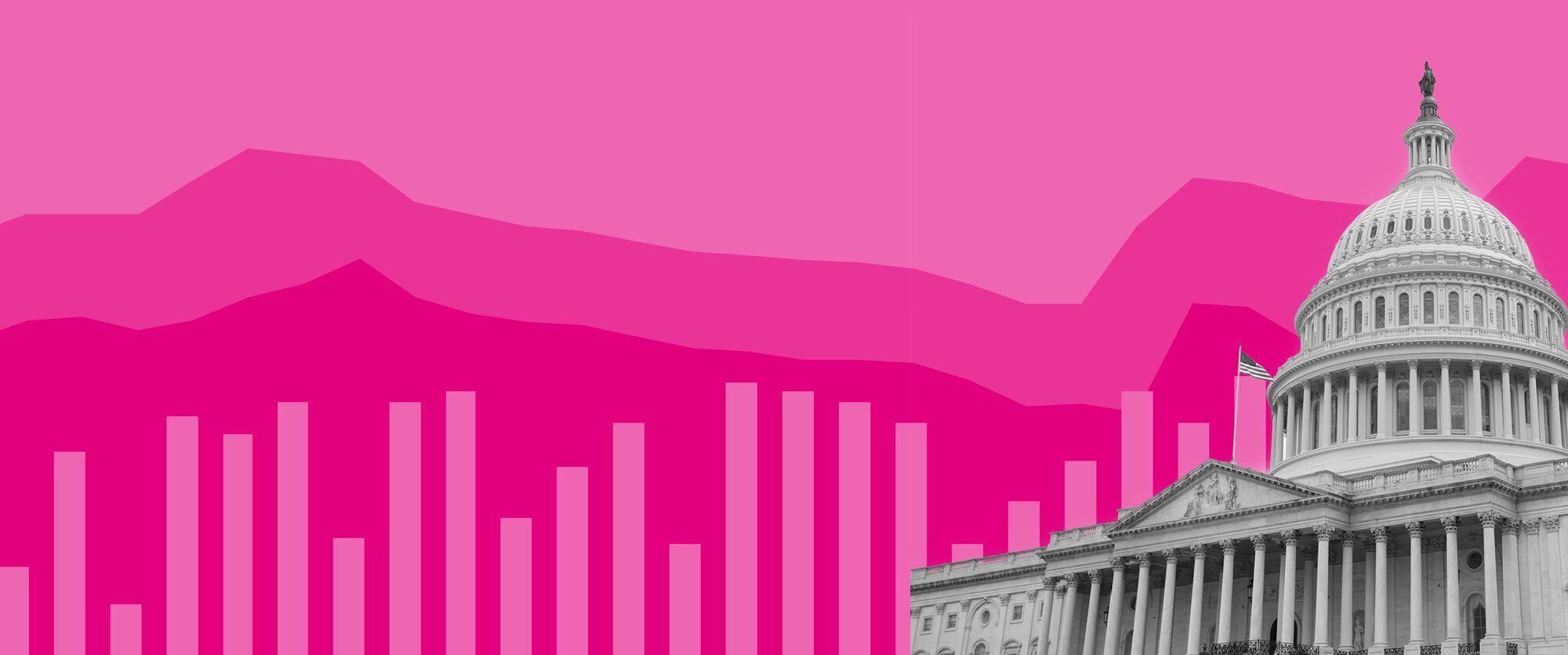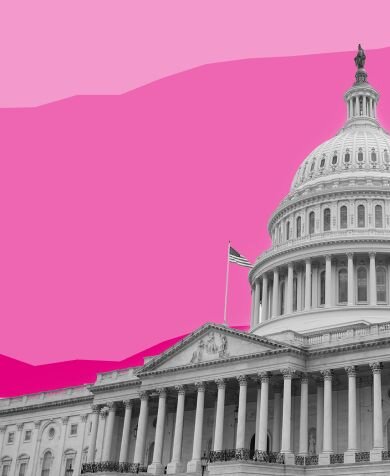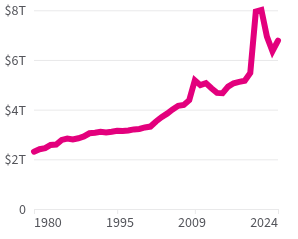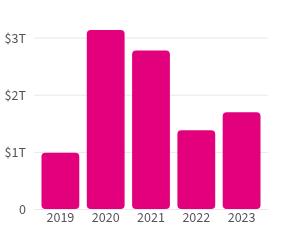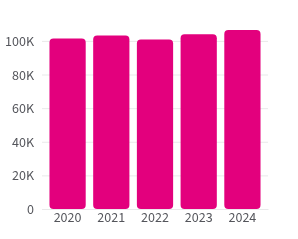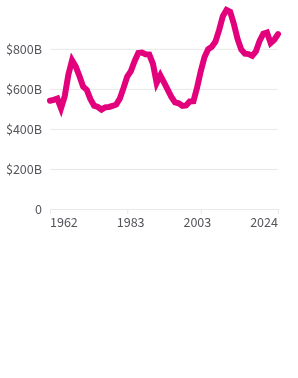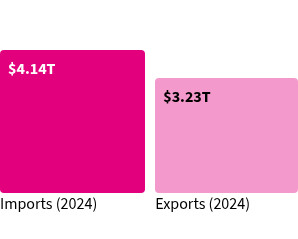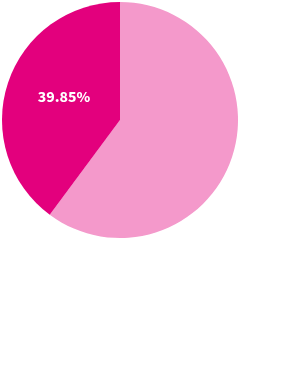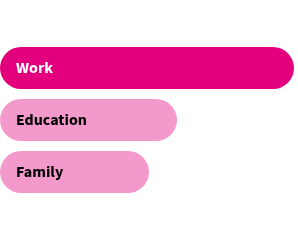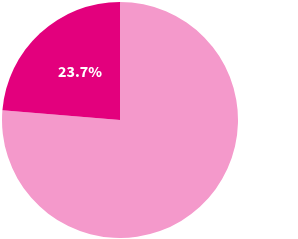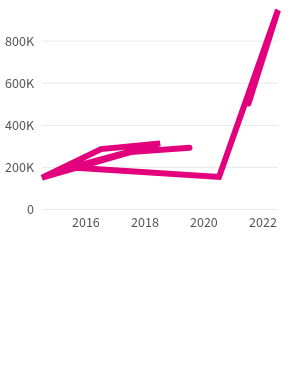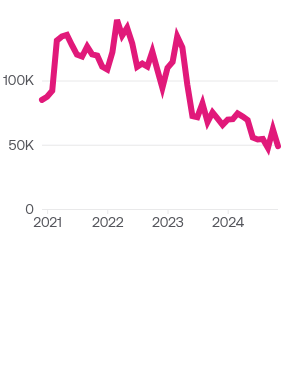The issues
Article II of the US Constitution mandates that the president address Congress on the “state of the union,” including a budget report and legislative proposals.
President Donald Trump is set to deliver a speech to Congress on Tuesday, March 4. As it is the first year of his second term, it is not officially designated as a State of the Union but rather a “joint address to Congress.” However, its purpose remains similar to a State of the Union address: to outline priorities and set the stage for upcoming policies.
Throughout history, the State of the Union and similar speeches have been heavy on policy or accomplishments, but have seldom been nonbiased. This is where the 2025 State of the Union in Numbers comes in.
This data-driven, impartial report contains historic metrics — how you use them to advocate for the changes you want to see in the country is up to you.
Budget
Federal government finances
In fiscal year 2024, federal spending and revenue were both down from their respective pandemic highs, yet they remained above pre-pandemic levels.

In fiscal year (FY) 2024, federal revenue was $4.9 trillion, down from the 2022 peak of $5.4 trillion. Individual income and payroll taxes are the biggest facets of US revenue.
Meanwhile, federal spending reached $6.8 trillion, down from the 2021 peak of $8.0 trillion. The largest category of spending, Social Security, accounted for 22% of the federal budget, or $1.4 trillion.
Federal spending also included $1.1 trillion in federal transfers to state and local governments, which accounts for 16% of spending. Most of the money transferred was for Medicaid, the nation’s health insurance program for low-income people.
Defense spending, accounting for 13% of the federal budget, fell from its FY 2010 peak of $964.4 billion to $820.3 billion in 2023.
Other spending categories included debt interest payments, benefit programs such as the Supplemental Nutrition Assistance Program, foreign aid, and education. Foreign aid commitments totaled $68.2 billion in 2023, with Ukraine receiving the largest share due to the Russia-Ukraine war.
Federal funding also supported public schools, which received $124.9 billion in the 2021–22 school year. This accounted for 13.7% of public school budgets, the highest share in decades.
As a result of the federal government spending more than it collected, the federal deficit was at $1.8 trillion in FY 2024. As of January 2025, the national debt stood at $34.3 trillion, exceeding the nation’s annual GDP.
Explore our most recent budget data
Explore up-to-date government data on federal revenue, spending, debt, and more.
Economy
Key market indicators
In 2024, the US GDP grew, prices and unemployment rose, and trade and global partnerships shifted compared to 2023.

Gross domestic product (GDP) reached $23.3 trillion (or an average of $68,513 per person) in 2024, up 2.8% from the previous year.
In 2023, the real estate, rental, and leasing industry contributed the most to GDP, generating $3.8 trillion in value, or about 13.7% of the total. This industry has been the biggest contributor to GDP since 2016. It was followed by professional and business services (13.0%) and government (11.2%).
Trade plays an important role in the economy as a component of GDP, with $3.2 trillion in trade exports and $4.1 trillion in imports in 2024. This resulted in a $918.4 billion trade deficit. In 2023, trade with Canada, Mexico, and China accounted for 32.7% of total exports and 37.8% of total imports.
In 2024, the US inflation rate, or the rate at which prices change, was 2.9%. Housing costs contributed approximately three-fifths of the increase.
Explore our most recent economy data
Explore up-to-date government data on GDP, trade, inflation, and more.
Economy
Workforce dynamics
In 2024, the job market had fewer job openings and layoffs than in 2023 and higher weekly wages and unemployment.

In 2024, the national unemployment rate was 4.0%, 0.4 percentage points higher than the previous year.
The average weekly wage in 2024 was $1,201, a 0.5% increase from 2023, after adjusting for inflation. Workers in the information sector earned the highest average weekly wages at $1,835, while leisure and hospitality workers earned the lowest at $562.
The foreign-born population held 17.9% of jobs in 2023. This rate varied by state; for example, 33.3% of the workforce in California was foreign-born, while 3.4% of the Mississippi workforce was.
From January to October 2024, the US had a monthly average of 8.1 million job openings, equal to 4.9% of jobs going unfilled. This was nearly 1 percentage point lower than in the same months in 2023. The professional and business services industry had the highest job opening rate, 6.1%, while the wholesale trade industry had the lowest at 3.0%.
Over the same period, there was an average of 1.7 million layoffs and discharges each month, equal to a 1.1% layoff rate (that’s the share of employed people who were laid off), similar to 2023.
Explore our most recent workforce data
Explore up-to-date government data on workforce dynamics, like job openings, layoffs, wages, and more.
Immigration
Immigrant population
Immigrants make up an increasing share of the US population. Their reasons for immigrating to the US include work, education, and family reunification.

In 2023, foreign-born residents accounted for 14% of the US population, or 47.8 million people. West Virginia had the lowest foreign-born population, while California had the highest.
Most of the foreign-born population are authorized immigrants with visas or green cards that permit them to live and work in the US. In 2022, authorized immigrants mostly came from Mexico, India, and China. Their primary reasons for immigration were work, which accounted for 45% of arrivals, and education, at 27%. Immigrants held 18% of jobs, with representation particularly high in the educational/health services industry.
In 2022, an estimated 11 million people were unauthorized immigrants. The unauthorized population consists of people who:
- are not permitted to be in the US, or
- are allowed to remain while they have pending asylum claims, or
- are subject to programs such as humanitarian parole and DACA.
The Office of Homeland Security Statistics estimates the majority of unauthorized immigrants arrived between 2000 and 2009.
Explore our most recent immigration data
Explore up-to-date government data on the foreign-born population, their role in the economy, and more.
Immigration
Immigrant arrivals & enforcement
In 2023, around 945,400 asylum applications were submitted. Refugees admitted to the US grew 66.7% from 2023 to 2024.

In 2022, approximately 2.6 million people immigrated to the United States through authorized channels, including green cards, temporary visas, and refugee or asylee status. Refugee admissions increased in 2024, with 100,000 refugees entering the country.
In 2024, there were 1.1 million migrant encounters along the US-Mexico border, including the apprehension of undocumented migrants at the US-Mexico border between official entry points. This was down 48% from 2023. The Border Patrol reported that about 1% of encounters involved migrants with prior criminal convictions, and most of those convictions were related to prior illegal entry or re-entry. As of November 2024, there were 678K repatriations, or deportations, in 2024.
At the end of 2023, immigration courts had a backlog of 2.5 million cases.
Explore our most recent immigration data
Explore up-to-date government data on new immigrant arrivals, migrant encounters, deportations, and more.
Defense
Defense & foreign affairs
Defense spending comprised a larger portion of the federal budget compared to 2020–2022. US foreign aid reached over 170 countries in 2023.

The US allocated $820.3 billion in fiscal year 2023 to defense spending, accounting for 13% of the federal budget. This spending covered operations, personnel compensation, equipment procurement, research, and more.
As of June 2024, the US military had about 2.1 million troops, including 1.3 million active duty personnel and an additional 761,600 reservists. While some of the 166,000 active duty troops were stationed abroad in Japan (53,000) and Germany (35,000), most were located domestically, particularly in California, Virginia, and Texas.
In FY 2023, the United States disbursed about $68.2 billion in foreign aid to support economic development and military assistance in 172 countries. Key recipients included Ukraine, Israel, and Ethiopia, which collectively accounted for 30% of all US foreign aid.
Explore our most recent defense data
Explore up-to-date government data on defense spending, military troops, and foreign aid.
You made it to the end!
Congrats on exploring the data behind the 2025 State of the Union! If you found these insights useful, share this page to inspire more fact-based conversations.
